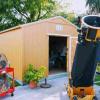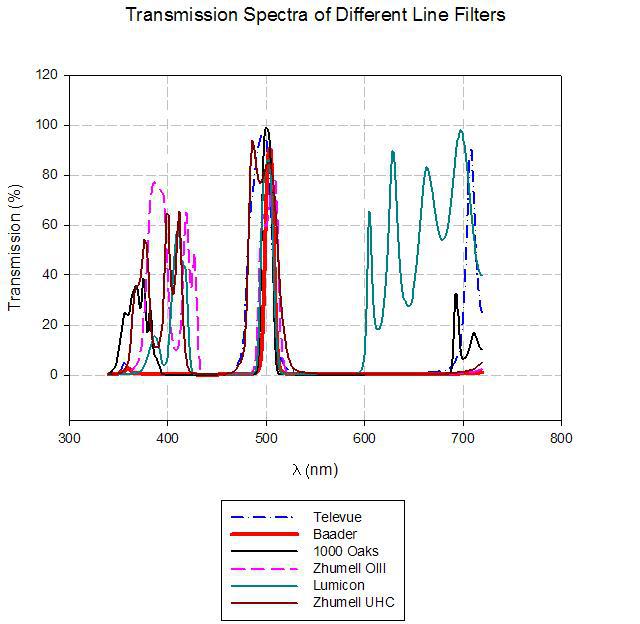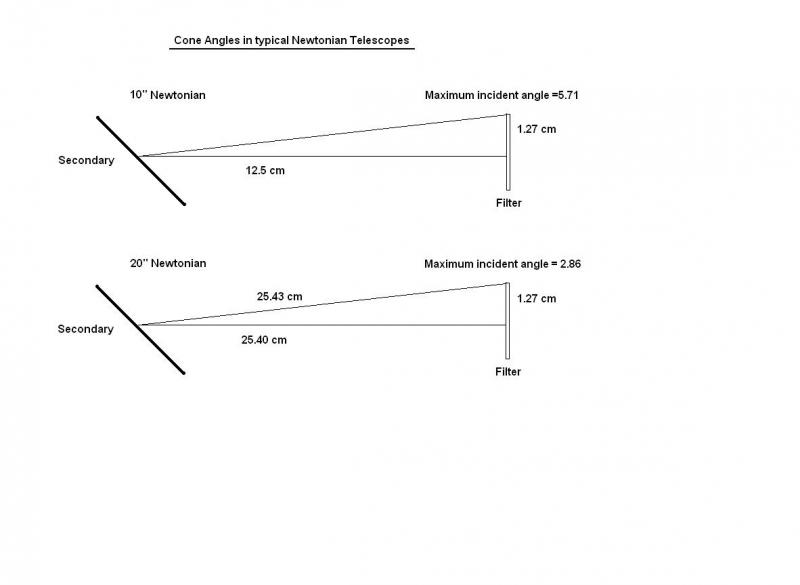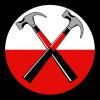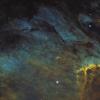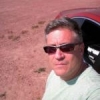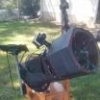
Forbidden Lines: Mini [OIII] Filter Shootout
#1
![Forbidden Lines: Mini [OIII] Filter Shootout: post #1](https://www.cloudynights.com//public/style_images/master/icon_share.png)
Posted 11 December 2009 - 05:48 PM
#2
![Forbidden Lines: Mini [OIII] Filter Shootout: post #2](https://www.cloudynights.com//public/style_images/master/icon_share.png)
Posted 11 December 2009 - 07:39 PM
Looks like there are translation errors going from Word to html. The Greek/mathematical symbols used in my review are distorted in the online version. I would like to hear from experienced reviewers on what program/font they use to maintain fidelity when final review is posted online
Thanks
Shaky
#3
![Forbidden Lines: Mini [OIII] Filter Shootout: post #3](https://www.cloudynights.com//public/style_images/master/icon_share.png)
Posted 12 December 2009 - 01:56 AM
- Procyon likes this
#4
![Forbidden Lines: Mini [OIII] Filter Shootout: post #4](https://www.cloudynights.com//public/style_images/master/icon_share.png)
Posted 12 December 2009 - 09:43 AM
Thanks for the comments. My lab results were in line with what I saw in the field and form the basis for my conclusions. There was no problem with Televue Bandmate at the eyepiece. I could see structural detail in Veil nebula both with my dob, Chris Duncan's (he owns the Televue) Celestron 14"XLT and Meade 12" LX 200 GPS using the Televue.
It is true that both OIII lines need to be transmitted but the full spectral scan (data not shown in my review) showed a far cleaner baseline for 1000 Oaks and Televue. Lumicon had noise in 600-700 nm region of the spectrum. Baader had the cleanest baseline and gave away nothing other than the OIII lines in scans in Near UV, Visible and NIR regions of the spectrum. Had Baader's numbers peaked 2 nm to the left, Baader would have been the perfect photography OIII filter, period. I shall post the full graph shortly to help support my point but did not put it in my review to enhance clarity. I know a lot of manufacturers put complete spectrographs and show a 90% peak around 500nm. Once you zoom in (like I did), the picture gets clearer.
And as I mentioned, the results are not just one scan, but 5 replicate scans of each filter and the instruments used were calibrated and in a clean lab room.
Also, the Lumicon filter case had a sticker that said 95 & 76% transmission (excellent numbers in my opinion) for 500.7 and 495.9 nm lines. I will be more than happy to test your Lumicon filter.
Clear skies to you
Shaky
#5
![Forbidden Lines: Mini [OIII] Filter Shootout: post #5](https://www.cloudynights.com//public/style_images/master/icon_share.png)
Posted 12 December 2009 - 09:47 AM
I am sorry, but the conclusions of this article do not really make much sense here. An OIII filter should ideally not let in any other light other than the OIII lines. <snipped>
In other words, you'd more likely base your conclusions on Table 2 (Bandwidth)?
What would be interesting is to create a model that uses both bandwidth and transmission at both lines to predict how users would rank these filters in field use. Not sure what weights to give to each factor but as a starting point you could weight it heavily towards bandwidth.
Cool thing is you could pretty easily test the validity of the model's predictions in blind field tests.
Mark
#6
![Forbidden Lines: Mini [OIII] Filter Shootout: post #6](https://www.cloudynights.com//public/style_images/master/icon_share.png)
Posted 12 December 2009 - 11:08 AM
Also a consideration, the converging beams shifts the bandpass a few nm's to a shorter wavelength probably hurting the Baader even more. See http://www.astrosurf...ters/curves.htm for a good explanation. I have been using the Baader in the 2" format but will have to consider replacing it if a comparison proves necessary. Also, a look through a friend's Zhumell provided little help on the Veil as your tests predicted.
GENE
#7
![Forbidden Lines: Mini [OIII] Filter Shootout: post #7](https://www.cloudynights.com//public/style_images/master/icon_share.png)
Posted 12 December 2009 - 11:44 AM
Also a consideration, the converging beams shifts the bandpass a few nm's to a shorter wavelength probably hurting the Baader even more.
No, a shift of a few nm to a shorter wavelength would in fact improve the transmission of the Baader by making the filter passband centered on the strongest [OIII] line at 500.7nm.
#8
![Forbidden Lines: Mini [OIII] Filter Shootout: post #8](https://www.cloudynights.com//public/style_images/master/icon_share.png)
Posted 12 December 2009 - 12:22 PM
#9
![Forbidden Lines: Mini [OIII] Filter Shootout: post #9](https://www.cloudynights.com//public/style_images/master/icon_share.png)
Posted 12 December 2009 - 02:37 PM
It is true that both OIII lines need to be transmitted but the full spectral scan (data not shown in my review) showed a far cleaner baseline for 1000 Oaks and Televue. Lumicon had noise in 600-700 nm region of the spectrum. Baader had the cleanest baseline and gave away nothing other than the OIII lines in scans in Near UV, Visible and NIR regions of the spectrum. Had Baader's numbers peaked 2 nm to the left, Baader would have been the perfect photography OIII filter, period.
The transmission beyond 600nm and below 400nm are somewhat less than important for visual use as the human eye has very low sensitivity at those wavelengths. In fact, the older Lumicion OIII filters had a nice big booming red "leak" passband that allowed me to see faint red colors from H-alpha in M42 and M8. The newer Lumicon OIII filters have little or no transmission outside the primary OIII wavelength passband. For visual use, *only* the FWHM and OIII wavelength transmission are the relevant figures. As for the Tele Vue, yes, it works but not as well as a narrower OIII! I have seen the DGM NPB (a narrow-band filter) perform nearly as well as my Lumicon OIII at some magnifications and on some objects, but on others, I have to use the OIII to get the major boost. With such variables in the equation, only the FWHM and peak transmission figures need to be looked at (and then, only if the peak transmission fails to exceed 90%).
And as I mentioned, the results are not just one scan, but 5 replicate scans of each filter and the instruments used were calibrated and in a clean lab room.
This is fine (and I am not exactly challenging your data), but to be completely accurate, there should have been scans of five samples of each filter. Filters do vary somewhat in their transmission characteristics from batch to batch. Clear skies to you.
#10
![Forbidden Lines: Mini [OIII] Filter Shootout: post #10](https://www.cloudynights.com//public/style_images/master/icon_share.png)
Posted 12 December 2009 - 02:43 PM
I read that link too. It is an excellent article where they discuss how incident angle in the incident light cone would cause spectral shifts.
In my case, the filter was not physically placed at an angle and the spetral peaks in 5 replicate scans were right on the money. I am not sure what the maximum spectrophotometer light cone angle was but need to do some research on it!!
It would be interesting to see however, if the spectral shift in a fast Newtonian with a Baader filter would bring the peak transmittance to 500.6 nm? I crunched some quick numbers into the equation and did not come with 20A (2nm shifts) but have an afternoon project on my plate now.
#11
![Forbidden Lines: Mini [OIII] Filter Shootout: post #11](https://www.cloudynights.com//public/style_images/master/icon_share.png)
Posted 12 December 2009 - 02:56 PM
Your point on inadequate sample is very valid for any scientific experiment. Unfortunately, I cannot afford a $289 Lumicon filter, nor do other local astronomers (I am comfortable borrowing from) have it. Lumicon is a great filter, no doubt, but the sample I had was not. Same goes with my original and replacement Zhumell filters which had different spectral characteristics. The replacement filter would have been a couple rungs higher in my review but you know how it goes...
Cheers
Shaky
#12
![Forbidden Lines: Mini [OIII] Filter Shootout: post #12](https://www.cloudynights.com//public/style_images/master/icon_share.png)
Posted 12 December 2009 - 03:47 PM
Great review! Nice seeing hard technical data from a lab setup and the attention you took in your experimentation.
Did you get a chance to also do some visual comparisons as well? That would be very interesting for me as we could see how well what we would expect the outcome to be based on the numbers, compared to an actual visual comparison. We just don't get too much of that where the equipment being used has been actually measured first (not just what the stickers say).
-Bill
#13
![Forbidden Lines: Mini [OIII] Filter Shootout: post #13](https://www.cloudynights.com//public/style_images/master/icon_share.png)
Posted 12 December 2009 - 05:11 PM
I did compare all of the filters in the field. The Baader was a 1.25" filter and all my WA EP's are in the 2" format, hence the field test was not exactly fair to Baader. I found the 1000 Oaks and Televue to provide highest contrast on all planetary nebulae tested. This was confirmed by few other local experienced astronomers who looked through my telescope last month.
I tested the Baader using my 9mm and 6mm eyepieces and the ring nebula looked okay with the filter, nowhere near as spectacular as the other filters above but it was'nt an apples to apples comparison.
I would however ask other Baader owners how they like their filter.
Clear skies to you
Shaky
#14
![Forbidden Lines: Mini [OIII] Filter Shootout: post #14](https://www.cloudynights.com//public/style_images/master/icon_share.png)
Posted 12 December 2009 - 05:59 PM
I really appreciated it, and it is very timely for me.
Part of me now regrets JUST selling my Thousand Oaks OIII (1.25").. my plan is to get the BEST 2" OIII (for AP)... so now I need to do some additional thinking...
It would appear, based on your review that scoring a Baader 2" OIII (if it were shifted appropriately) would be the best.. but absent that, the Thousand Oaks 2" is looking good...
Anyone reviewing this review have experience for purely AP uses with 2" OIII's?
Again, I really liked the wealth of evaluational/technical details in this review!
Clear enough skies
#15
![Forbidden Lines: Mini [OIII] Filter Shootout: post #15](https://www.cloudynights.com//public/style_images/master/icon_share.png)
Posted 12 December 2009 - 07:49 PM
#16
![Forbidden Lines: Mini [OIII] Filter Shootout: post #16](https://www.cloudynights.com//public/style_images/master/icon_share.png)
Posted 12 December 2009 - 08:04 PM
I also checked the Baader and 1000 Oaks transmission all the way up to 900 nm (sensitivity of typical CCD/CMOS sensors) and the baselines were clean.
#17
![Forbidden Lines: Mini [OIII] Filter Shootout: post #17](https://www.cloudynights.com//public/style_images/master/icon_share.png)
Posted 13 December 2009 - 01:16 AM
I am sorry, but the conclusions of this article do not really make much sense here. An OIII filter should ideally not let in any other light other than the OIII lines. <snipped>
In other words, you'd more likely base your conclusions on Table 2 (Bandwidth)?
What would be interesting is to create a model that uses both bandwidth and transmission at both lines to predict how users would rank these filters in field use. Not sure what weights to give to each factor but as a starting point you could weight it heavily towards bandwidth.
Cool thing is you could pretty easily test the validity of the model's predictions in blind field tests.
Mark
Yes, the exclusion of light is the primary reason for getting an OIII filter in the first place, so the Full-Width at Half Maximum (FWHM) is one of the primary things which needs to be looked at. The peak transmission and the transmission at the two OIII lines usually aren't a lot different, but the FWHM data is a prime way to determine how "sharp" a given filter actually is. If the transmission at the two OIII lines equals or exceeds 90%, then that aspect is covered and I look at the FWHM figure to get an overall idea of how the filter will perform. Again, the FWHM of the Tele Vue Bandmate OIII is nearly as broad as the relatively narrow DGM Optics NPB filter, so one is getting more of a narrowband than a true line filter tuned to the Oxygen III line. The performance difference between Oxygen III filters should be done under conditions which stress the filter performance to the limit. I once found that the Lumicon OIII allowed me to see the Veil Nebula in my 10 inch Newtonian with the full moon in the sky (barely visible, but the narrow-band didn't show it). I suspect the Tele Vue Bandmate OIII might not be able to duplicate this feat. Clear skies to you.
#18
![Forbidden Lines: Mini [OIII] Filter Shootout: post #18](https://www.cloudynights.com//public/style_images/master/icon_share.png)
Posted 13 December 2009 - 01:19 AM
http://www.astroamateur.de/filter/
It is mostly in German, but one can usually figure out what is going on there. I have found Andre's results to be reasonably accurate and quite useful. Clear skies to you.
#19
![Forbidden Lines: Mini [OIII] Filter Shootout: post #19](https://www.cloudynights.com//public/style_images/master/icon_share.png)
Posted 13 December 2009 - 08:54 AM
The only comparison of the Baader OIII to other OIII's I have made is to the Zhumell indicated in my first post. I have used it in conjuction with the Orion Ultra Block and the DMG NPB, both very good narrow band filters. I find the OIII is my first choice for the Veil and I can better view additional nebulosity north of the brightest part of the Lagoon.
Both of my large reflectors are F5 having the same converging light beam. I would have to guess at the index of refraction of the OIII filter and haven't done the math to determine the spectral shift, but it will bring it's through put closer to if not onto the emission lines of OIII.
To answer your question, this Baader OIII filter is a good addition to my filter collection.
GENE
#20
![Forbidden Lines: Mini [OIII] Filter Shootout: post #20](https://www.cloudynights.com//public/style_images/master/icon_share.png)
Posted 13 December 2009 - 08:08 PM
Thanks for sharing your experiences with Baader. What impressed most about Baader was the baseline as seen in my post above. I looked at the German report also and saw that my results were in line with what they reported. For that matter, even the Televue peak near 700nm and red noise in Lumicon/spectral shapes are similar to what I obtained in my experiments.
I am not sure if the Baader spectral shift would be a whopping 32A (3.2nm for metric lovers) in real world. Even with the lower transmission, Baader OIII should be an excellent AP filter because of the clean baseline, could anybody else weigh in?
#21
![Forbidden Lines: Mini [OIII] Filter Shootout: post #21](https://www.cloudynights.com//public/style_images/master/icon_share.png)
Posted 14 December 2009 - 12:47 AM
Gene,
Thanks for sharing your experiences with Baader. What impressed most about Baader was the baseline as seen in my post above. I looked at the German report also and saw that my results were in line with what they reported. For that matter, even the Televue peak near 700nm and red noise in Lumicon/spectral shapes are similar to what I obtained in my experiments.
I am not sure if the Baader spectral shift would be a whopping 32A (3.2nm for metric lovers) in real world. Even with the lower transmission, Baader OIII should be an excellent AP filter because of the clean baseline, could anybody else weigh in?
The Baader works pretty well visually, but its narrowness can cause problems. The weaker 4959 angstrom line often gets attenuated at normal incidence, although with off-normal light, the passband might shift just enough to let more of it in. Since the 5007 angstrom line with most nebulae is stronger to begin with, the reduction in intensity might not be as great a factor for some nebulae. The other factor is peak transmission for the visual Baader OIII which is around 92% (around 90% for the 5007 angstrom line and anywhere from 32% to 49% for the 4959 angstrom line). The Baader CCD OIII has a somewhat lower transmission peak of 85.5%, but is pretty near zero transmission everywhere outside its primary passband. Clear skies to you.
#23
![Forbidden Lines: Mini [OIII] Filter Shootout: post #23](https://www.cloudynights.com//public/style_images/master/icon_share.png)
Posted 15 December 2009 - 11:05 AM
Lambda (shift) = Lambda (max) x [1 - (Beta squared/ 4 x n squared)]
and cone angle sin-beta = 1/2N0 where N0 = aperture (f/5)
where Beta = maximum angle of incidence and n = refractive index of glass (typically 1.4 but I used maximum 2.0 with filter coatings)
For refractive index n = 2.0,
10" Newtonian f/5 with maximum cone angle = 5.71 degrees
Maximum spectral shift = 503.90 [1 - (0.09949/16)]
= 503.58 nm
Peak wavelength shift = Half the value it would shift in collimated light at the cone's most off axis angle
Baader peak wavelength shift in a 10" f/5 Newtonian = 503.74nm
Similarly for a 20" f/4 Newtonian
Baader spectral shift = 503.56 nm
Thus the spectral shifts, though mathematically significant are not much to change the peak transmission dramatically.
Comments?
#24
![Forbidden Lines: Mini [OIII] Filter Shootout: post #24](https://www.cloudynights.com//public/style_images/master/icon_share.png)
Posted 15 December 2009 - 11:09 AM
#25
![Forbidden Lines: Mini [OIII] Filter Shootout: post #25](https://www.cloudynights.com//public/style_images/master/icon_share.png)
Posted 19 February 2013 - 04:21 AM
Cheers!





